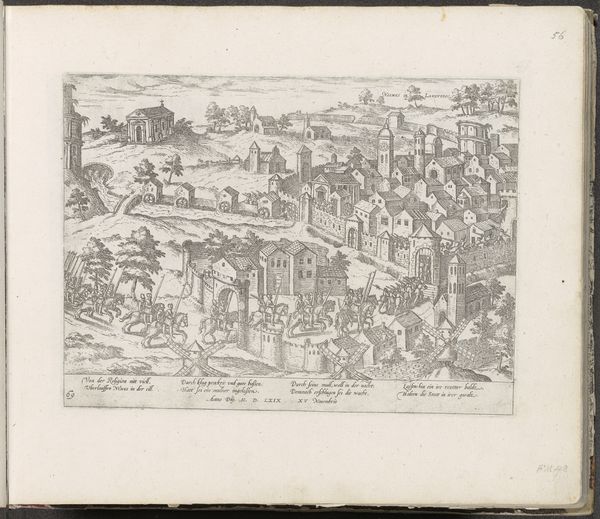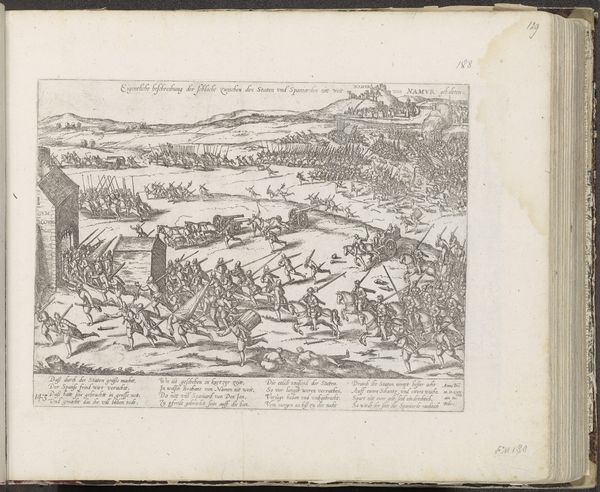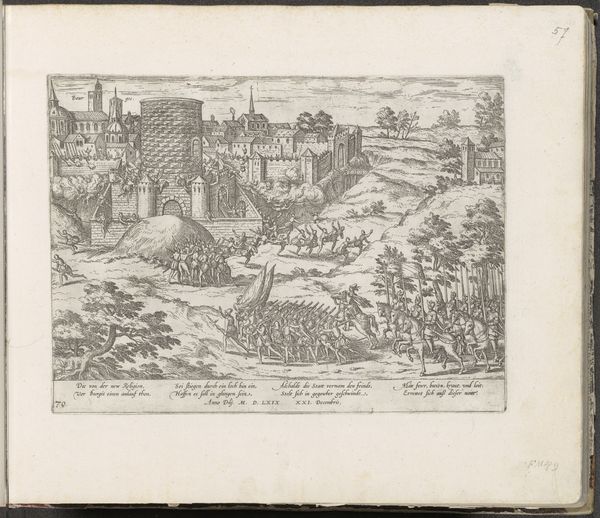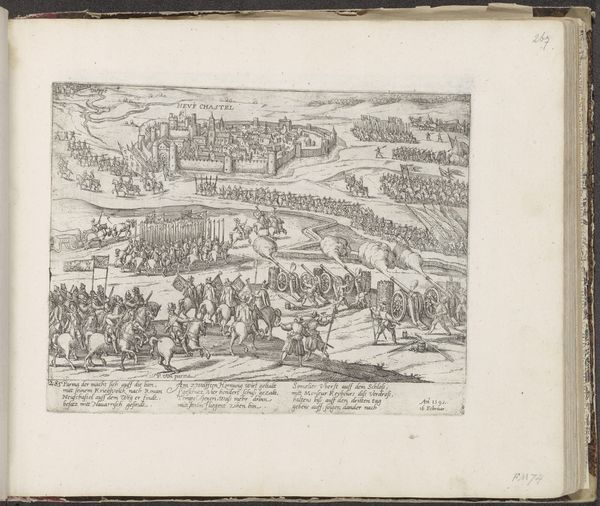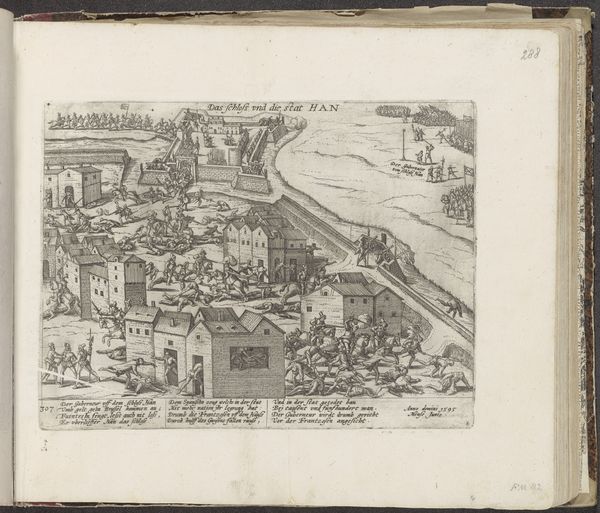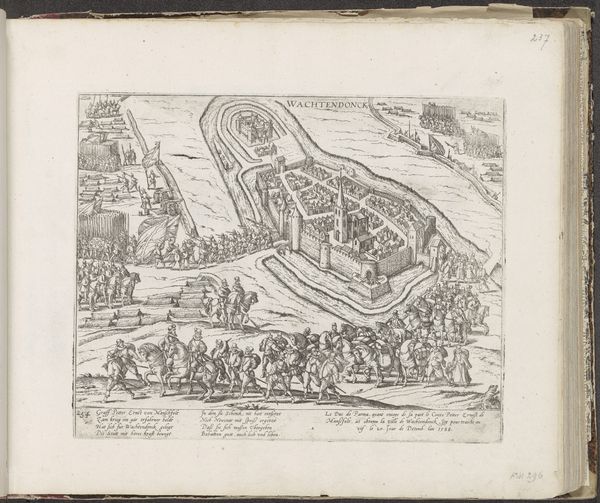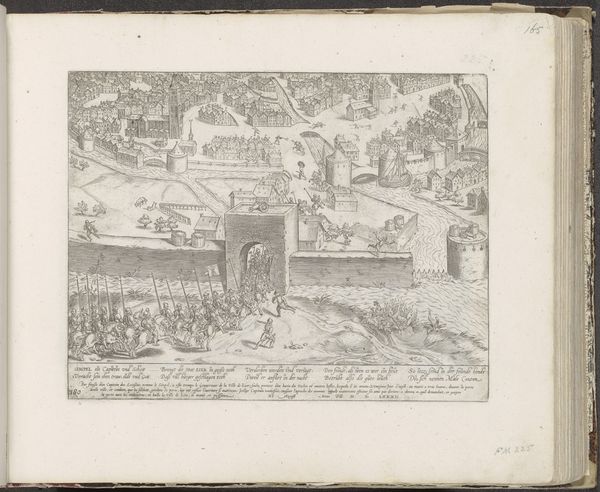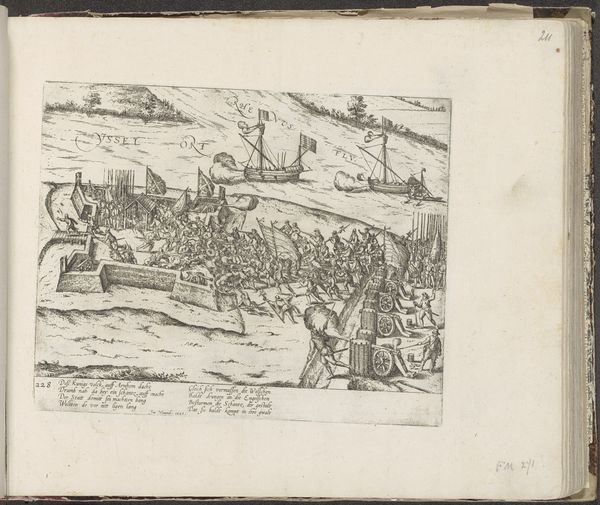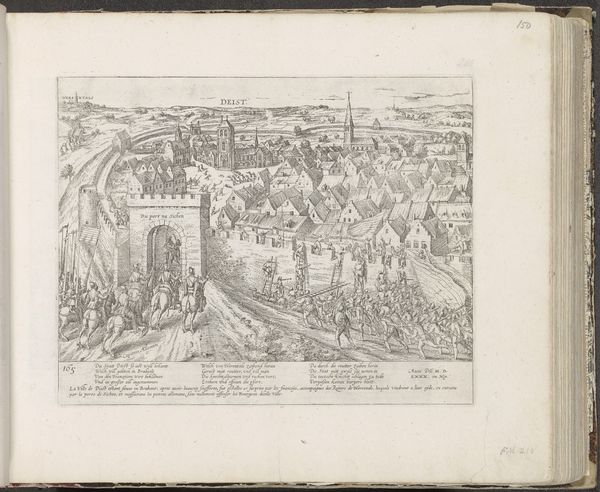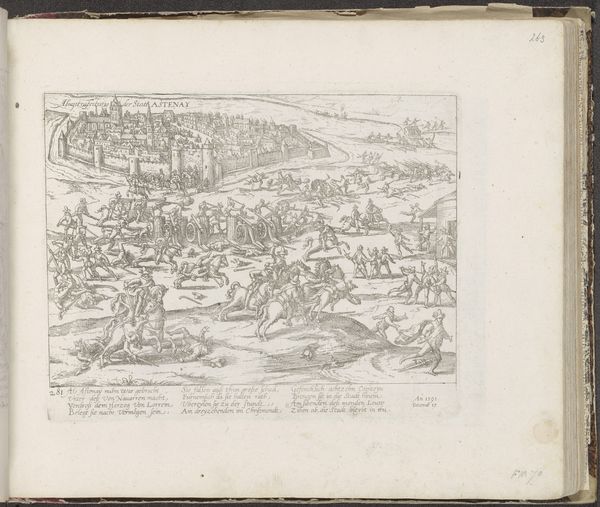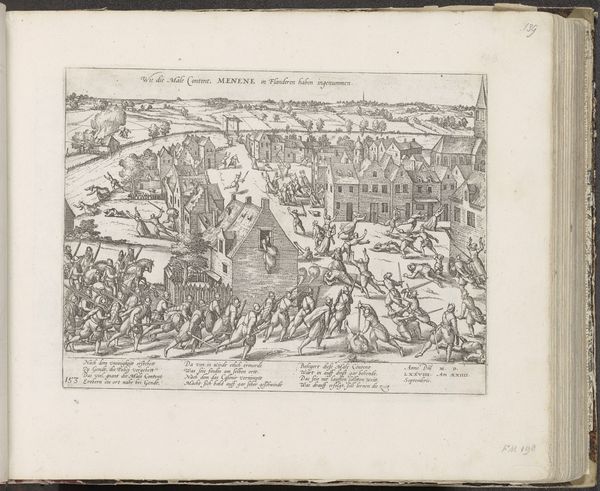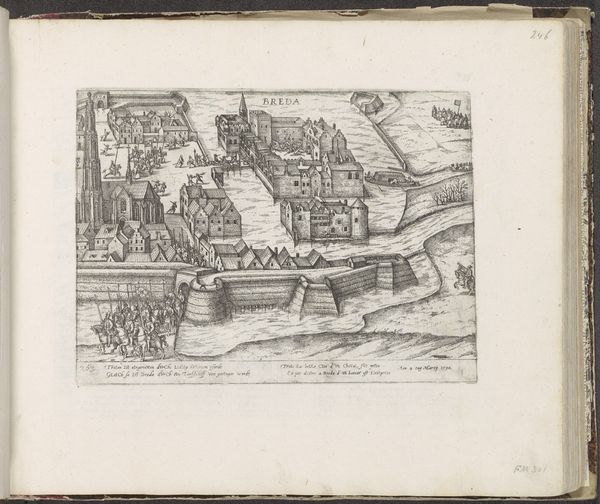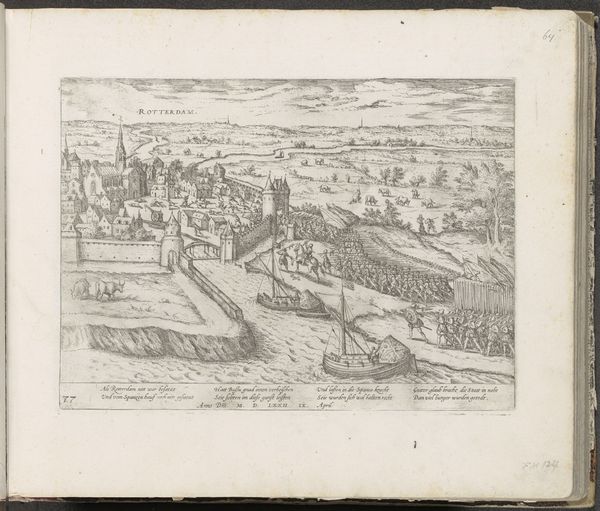
print, engraving
# print
#
pen sketch
#
11_renaissance
#
history-painting
#
engraving
Dimensions: height 191 mm, width 282 mm
Copyright: Rijks Museum: Open Domain
Curator: This detailed engraving depicts the 1590 Siege of Rheinberg. Frans Hogenberg created this print sometime between 1590 and 1592. It now resides here at the Rijksmuseum. Editor: It feels intensely busy, a real spectacle of war depicted in miniature. All of those tiny figures, almost like ants, swarming around this imposing fortress on the Rhine! Curator: Hogenberg was part of a workshop producing these images—his work sits within the history of printmaking as a specific means of mass communication. Note how he meticulously captures every detail, seemingly driven by a desire for accuracy. This wasn't high art in the modern sense; it was a form of visual journalism for the masses. Editor: Visual journalism, absolutely. You can practically hear the cacophony of clashing steel and panicked shouts. How do you think this imagery worked to stoke nationalistic fervor at the time, or shape public opinion on warfare? Curator: It fueled it! These weren't neutral documents. They promoted the idea of a divinely ordained political order, reflecting particular positions in the struggle between the Dutch Republic and Spain. Rheinberg itself changed hands several times. Editor: Looking closely, the materiality of the print is so central to its impact. Those fine lines etched into the plate, reproduced over and over. It becomes about how easily such inflammatory messages can circulate. What would it mean to consider this through a gendered lens? What impact did this have for those left behind? Curator: Considering it within a context of labor reveals it was likely an industrialized product. While Hogenberg’s name is most recognizable, it is difficult to isolate his specific hand within the complete process, or recognize any influences from women, or others that were working within the shop. Editor: I agree—emphasizing the collaborative context really deepens the art historical perspective. It pushes beyond just appreciating aesthetic style to examining these socio-historical dimensions, questioning everything. Curator: Right—understanding its construction reminds us that artworks like these are a product of their time, material, social and political contexts all come to the fore. Editor: Exactly. By looking closely, we begin to recognize how history itself is constructed and represented, one image, one print at a time.
Comments
No comments
Be the first to comment and join the conversation on the ultimate creative platform.
